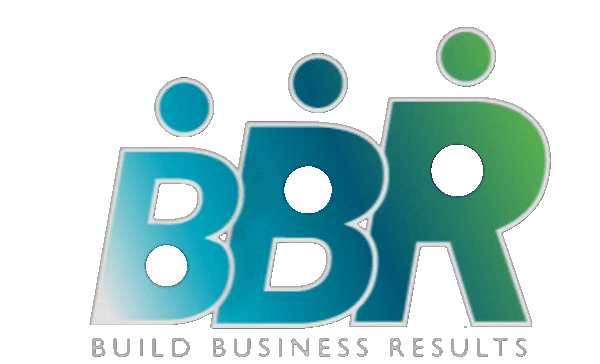What Are the Ingredients of a Successful Product Launch?

A product launch is a marketing strategy consisting of a carefully planned and scheduled sequence of events with the goal to make a big happening out of the release and, of course, make as much sales as possible in a short time span.
But what can you do to make your launch stand out from the rest? Find out on this article and share your ideas in the Build Business Results Network.
And If you want to get your business or sales funnel launched fast to attract clients consistently, do check out our IGNITE Business Accelerator Program.
See you on the action-field,
Raksha Sukhia, SMB Growth Expert,
Founder BBR Network. #bbrnetwork
Last year, the number of product launches increased by an average of 27% per company, with some sectors like food and beverage experiencing even greater growth. Because of this influx of new products and launches, 4 in 5 respondents (81%) to a survey by Bain & Company say there is a window of time that determines the long-term success of a product, with half saying that this period of time has decreased over the past 5 years.
So, what can marketers do to have their launch stand out from the rest? Among the 650 US senior marketers surveyed for the report, Bain & Company compared what “launch leaders” — defined as “the top 15% of respondents who reported financially successful launches, plus market share and revenue growth over the prior year” — are doing that the rest are not. Here’s what they found out.
1. Using Social Listening
One thing that sets launch leaders apart from the rest is that they are 2.3x more likely to fully understand their target customers. As part of learning about their audience, more than one-third (36%) of launch leaders say they use social listening data to guide their launch strategy and/or creative content, compared to only 15% of other marketers.
2. Use Authentic Messaging That Evokes Emotions
Having a grasp of the target audience for a product launch helps marketers develop authentic messages. Almost half (47%) of launch leaders say that audiences perceived their messaging or campaign as authentic, while only about half as many (24%) of the other marketers could say the same.
It’s not just about being authentic. Messages need to also evoke an emotional response. Two-fifths (41%) of launch leaders say the creative they used emphasized evoking an emotional response, rather than merely highlighting features.
3. Focus on a Specific Audience
More than half (53%) of launch leaders forego targeting the wider population and, instead, concentrate their efforts on a specific audience. Not only that, but launch leaders are also more likely to use collateral throughout their launch that is shareable and has the potential to go viral.
While relying on word-of-mouth is far from a new concept, the paid media that drives conversations are changing. By the end of 2018, digital media had edged out television as the paid media which drove the most conversations among consumers.
4. Make a Splash Early On
Launch leaders invest the largest part of their working media budget on the launch date, after ramping up spending in the prelaunch period. They are also almost twice (1.7x) as likely to blitz their spend on an average of 6 channels (including social media, display ads and paid search) during their launch as others.
5. Tweak and Test
Lastly, launch leaders are more likely to monitor all their platforms using real-time data, adjusting their collateral and consumer engagement strategy accordingly. They are also 2.5 times more likely to have the right caliber of talent to conduct their marketing analytics.
Bonus Ingredient: Don’t Count Out the Boomers
While Baby Boomers account for the greatest percentage share of household wealth in the US, only one-quarter (25%) say they were aware of a new product launch in the past year, per a separate report [download page] from Five by Five. Here are a few tips to help reach this important audience:
- Older consumers are more likely to take a ‘wait and see’ approach to try new products;
- They also prefer traditional media, specifically TV, to learn about launches;
- However, word-of-mouth and the web ranked high in the US for food products; and
- Certain life events such as retirement and medical procedures heavily influence purchase behavior.
About the Data: The Bain & Company report was based on a survey of 650 US senior marketing executives.
The Five by Five was based on findings from a survey of 3,000 Baby Boomers (ages 55 years and older) from the US, UK and Australia (1,000 respondents per region).
Source: Marketing Charts
Image Source: FreePik,
SignUp for Weekly Ezine
Related Article
What’s a Good Landing Page Conversion Rate?
Business Agility Is the New Norm. Do You Have What It Takes?
Tags
#BBR Network, #Small Business Growth, Build Business Results (BBR) Network, business accelerator, Business Development, Business Growth, Business Growth as a Service, business networking, Business plan, Coaching, Consulting, Conversions, Converting websites, Digital Marketing, Drip Campaigns, Execute marketing, Funnels, get more customers, Get more customers online, Getting more sales, Getting online sales, Joint ventures, Lead Generation, Marketing, Marketing as a Service, Marketing Campaigns, Marketing coach, Marketing plan, Marketing Plans, Online Marketing, Profit, Raksha Sukhia, Referral partnerships, Revenue, Small Business, Strategic Marketing, Tactical Marketing, urnkey Marketing, website










